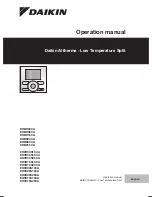
4MELFA-BASIC IV
Detailed specifications of MELFA-BASIC V
4-130
4.3.7 Characters having special meanings
(1) Uppercase and lowercase identification
Lowercase characters will be resigned as lowercase characters when they are used in comments or in char-
acter string data. In all other cases, they will be converted to uppercase letters when the program is read.
(2) Underscore ( _ )
The underscore is used for the second character of an identifier (variable name) to identify the variable as
an external variable between programs. Refer to
Page 137, "4.3.22 External variables"
for details.
Example) P_Curr, M_01, M_ABC
(3) Apostrophe ( ' )
The apostrophe ( ' ) is used at the head of all comments steps. When assigned at the head of a character it
is a substitute for the Rem statement.
Example) 1 Mov P1 'GET ;GET will be set as the comment.
2 'GET PARTS ;This is the same as 150 Rem GET PARTS.
(4) Asterisk ( * )
The asterisk is placed in front of label names used as the branch destination.
Example) 2 *CHECK
(5) Comma ( , )
The comma is used as a delimiter when there are several parameters or suffixes.
Example) P1=(200, 150, .......)
(6) Period ( . )
The period is used for obtaining certain components out of multiple data such as decimal points, position
variables and joint variables.
Example) M1 = P2.X ; Substitute the position variable P2.X coordinate element in numeric variable M1.
(7) Space
The space character, when used as part of a character string constant or within a comments step, is inter-
preted as a character. The space character is required as a delimiter immediately after a step No. or a com-
mand word, and between data items. In the [Format] given in section
Page 152, "4.11 Detailed explanation
, the space is indicated with a "[] " where required.
















































